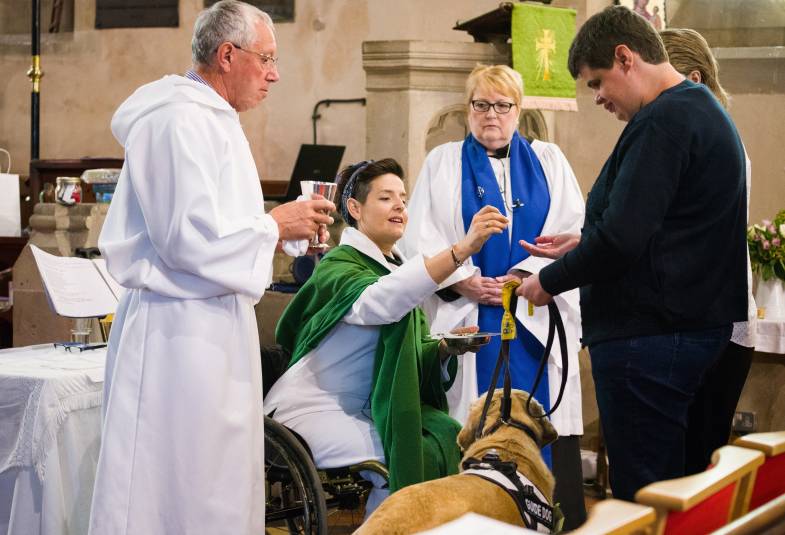Churches have a responsibility to make sure that, as far as is reasonably possible, their buildings and activities are accessible to everyone.
We can help you understand the Equality Act and what it means for your church.
Download our guidance
This guidance is intended to help PCCs think about accessibility, and what it means for them. It includes practical examples on how buildings can be adapted to make them better able to provide equal access, and advice on gaining permission for building alterations.
- Equal Access to Church Buildings (11.67 MB)

The Equality Act 2010
The Act makes sure everyone has the same opportunities at work and in wider society, including in churches and church buildings.
It protects people from unfair treatment and discrimination in many different areas of life, but here we are talking about disability, which includes, but is not limited to, hearing and visual impairment, reduced mobility, manual dexterity and learning disability.
And makes it unlawful to discriminate against people over:
- Employment
- The provision of goods
- Facilities and services
- Or the management of premises
What does it mean for your church?
It means that everyone should be able to use your building. And if you employ people, you should be able to hire a disabled person.
Churches want to be accessible so that anyone can be part of their community, not just because the law requires it. We are working on resources to help make small, simple changes which can improve access for all.
What do you need to do?
You need to take reasonable steps to make it possible for a disabled person to use your services.
Look at your building and your activities. Think about:
- The access to the inside and outside of the building
- Accessing the toilets
- Accessing noticeboards
- Circulating in the churchyard and on paths
- Participating in the service or other activities
Is there anything that prevents or makes it unreasonably difficult for a disabled person to get involved? If so, then you need to take reasonable steps to:
- Change or remove it
- Offer another method to use your services
- Provide aids (e.g. induction loops, handrails, large-print sheets, etc.)
Engage with your DAC as early as possible to discuss these changes
How do you do it?
To identify what actions you need to take, you should do an access appraisal. You can do this yourself, or look for a qualified access consultant to help you.
Look at:
- What do disabled people in your congregation or community feel they need?
- What services you provide. How and where do you provide them?
- What are the barriers to people wanting to use your services?
- How significant is your church and its furnishings?
Analyse your results and balance out all the factors.
Write a list of things to do and prioritise them to create an access plan.
Make sure you take everyone’s needs into account. Don’t forget about the elderly and people with pushchairs and toddlers.
Do you still need a faculty?
It depends.
If you are making small, simple changes, like using clear print for service sheets, then you can go ahead without any further permissions.
But if you are making changes to your building then it is likely you will need a faculty.
Planning approval and building regulations might also be required.